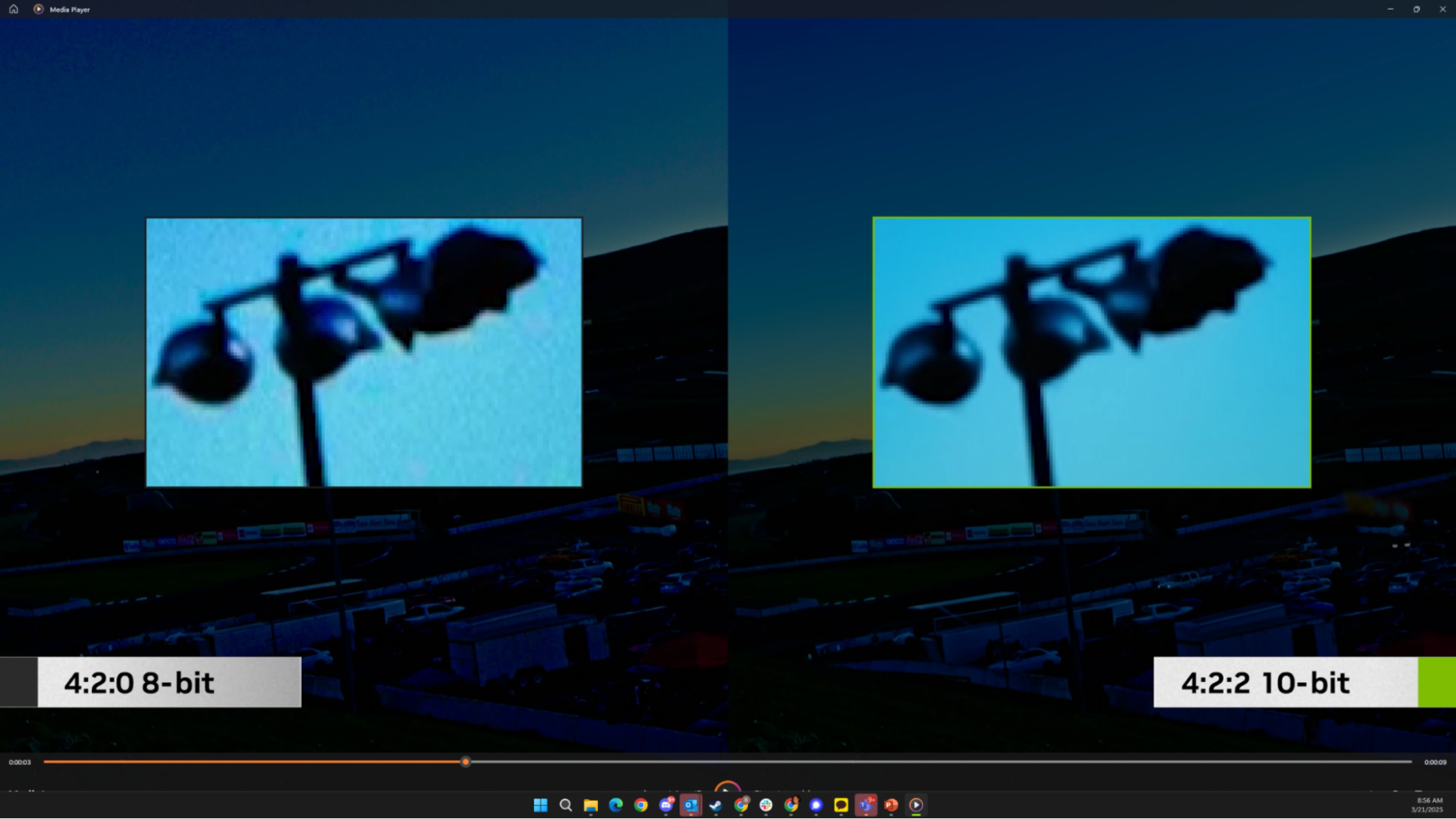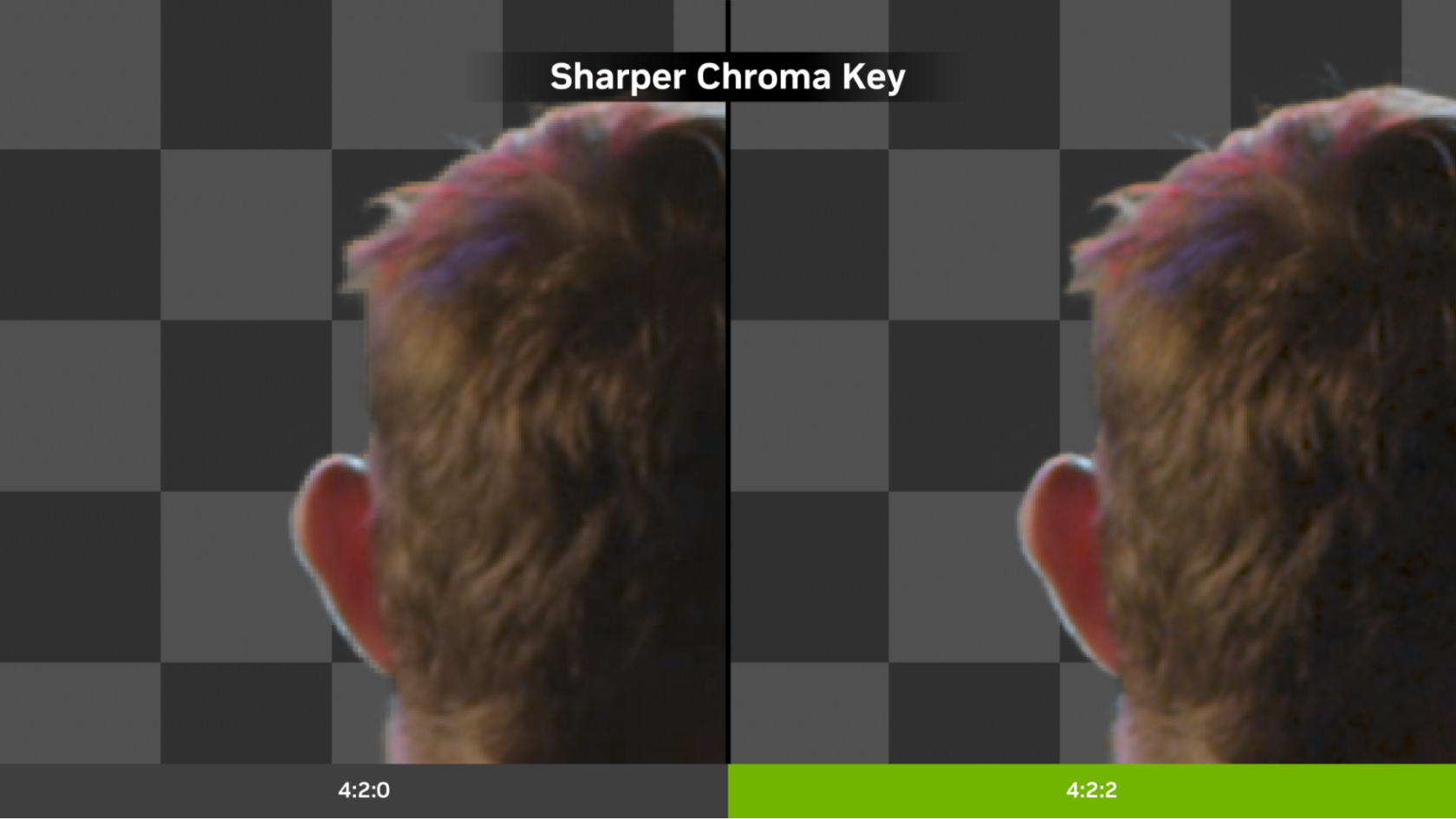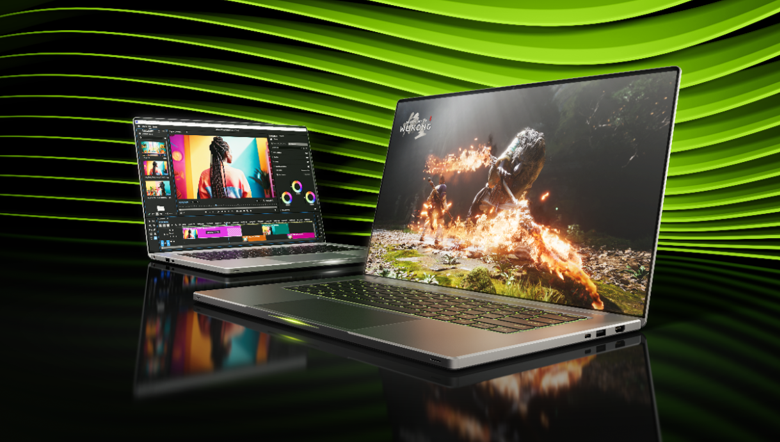Video editing workflows are getting a lot more colorful.
Adobe recently announced massive updates to Adobe Premiere Pro (beta) and Adobe Media Encoder, including PC support for 4:2:2 video color editing.
The 4:2:2 color format is a game changer for professional video editors, as it retains nearly as much color information as 4:4:4 while greatly reducing file size. This improves color grading and chroma keying — using color information to isolate a specific range of hues — while maximizing efficiency and quality.
In addition, new NVIDIA GeForce RTX 5090 and 5080 laptops — built on the NVIDIA Blackwell architecture — are out now, accelerating 4:2:2 and advanced AI-powered features across video-editing workflows.
Adobe and other industry partners are attending NAB Show — a premier gathering of over 100,000 leaders in the broadcast, media and entertainment industries — running April 5-9 in Las Vegas. Professionals in these fields will come together for education, networking and exploring the latest technologies and trends.
Shed Some Color on 4:2:2
Consumer cameras that are limited to 4:2:0 color compression capture a limited amount of color information. 4:2:0 is acceptable for video playback on browsers, but professional video editors often rely on cameras that capture 4:2:2 color depth with precise color accuracy to ensure higher color fidelity.
Adobe Premiere Pro’s beta with 4:2:2 means video data can now provide double the color information with just a 1.3x increase in raw file size over 4:2:0. This unlocks several key benefits within professional video-production workflows:
Increased Color Accuracy: 10-bit 4:2:2 retains more color information compared with 8-bit 4:2:0, leading to more accurate color representation and better color grading results.

More Flexibility: The extra color data allows for increased flexibility during color correction and grading, enabling more nuanced adjustments and corrections.
Improved Keying: 4:2:2 is particularly beneficial for keying — including green screening — as it enables cleaner, more accurate extraction of the subject from the background, as well as cleaner edges of small keyed objects like hair.

Smaller File Sizes: Compared with 4:4:4, 4:2:2 reduces file sizes without significantly impacting picture quality, offering an optimal balance between quality and storage.
Combining 4:2:2 support with NVIDIA hardware increases creative possibilities.
Advanced Video Editing
Prosumer-grade cameras from most major brands support HEVC and H.264 10-bit 4:2:2 formats to deliver superior image quality, manageable file sizes and the flexibility needed for professional video production.
GeForce RTX 50 Series GPUs paired with Microsoft Windows 11 come with GPU-powered decode acceleration in HEVC and H.264 10-bit 4:2:2 formats.
GPU-powered decode enables faster-than-real-time playback without stuttering, the ability to work with original camera media instead of proxies, smoother timeline responsiveness and reduced CPU load — freeing system resources for multi-app workflows and creative tasks.
RTX 50 Series’ 4:2:2 hardware can decode up to six 4K 60 frames-per-second video sources on an RTX 5090-enabled studio PC, enabling smooth multi-camera video-editing workflows on Adobe Premiere Pro.
Video exports are also accelerated with NVIDIA’s ninth-generation encoder and sixth-generation decoder.

In GeForce RTX 50 Series GPUs, the ninth-generation NVIDIA video encoder, NVENC, offers an 8% BD-BR upgrade in video encoding efficiency when exporting to HEVC on Premiere Pro.
Adobe AI Accelerated
Adobe delivers an impressive array of advanced AI features for idea generation, enabling streamlined processes, improved productivity and opportunities to explore new artistic avenues — all accelerated by NVIDIA RTX GPUs.
For example, Adobe Media Intelligence, a feature in Premiere Pro (beta) and After Effects (beta), uses AI to analyze footage and apply semantic tags to clips. This lets users more easily and quickly find specific footage by describing its content, including objects, locations, camera angles and even transcribed spoken words.
Media Intelligence runs 30% faster on the GeForce RTX 5090 Laptop GPU compared with the GeForce RTX 4090 Laptop GPU.
In addition, the Enhance Speech feature in Premiere Pro (beta) improves the quality of recorded speech by filtering out unwanted noise and making the audio sound clearer and more professional. Enhance Speech runs 7x faster on GeForce RTX 5090 Laptop GPUs compared to the MacBook Pro M4 Max.
Visit Adobe’s Premiere Pro page to download a free trial of the beta and explore the slew of AI-powered features across the Adobe Creative Cloud and Substance 3D apps.
Unleash (AI)nfinite Possibilities
GeForce RTX 5090 and 5080 Series laptops deliver the largest-ever generational leap in portable performance for creating, gaming and all things AI.
They can run creative generative AI models such as Flux up to 2x faster in a smaller memory footprint, compared with the previous generation.
The previously mentioned ninth-generation NVIDIA encoders elevate video editing and livestreaming workflows, and come with NVIDIA DLSS 4 technology and up to 24GB of VRAM to tackle massive 3D projects.
NVIDIA Max-Q hardware technologies use AI to optimize every aspect of a laptop — the GPU, CPU, memory, thermals, software, display and more — to deliver incredible performance and battery life in thin and quiet devices.
All GeForce RTX 50 Series laptops include NVIDIA Studio platform optimizations, with over 130 GPU-accelerated content creation apps and exclusive Studio tools including NVIDIA Studio Drivers, tested extensively to enhance performance and maximize stability in popular creative apps.

Adobe will participate in the Creator Lab at NAB Show, offering hands-on training for editors to elevate their skills with Adobe tools. Attend a 30-minute section and try out Puget Systems laptops equipped with GeForce RTX 5080 Laptop GPUs to experience blazing-fast performance and demo new generative AI features.
Use NVIDIA’s product finder to explore available GeForce RTX 50 Series laptops with complete specifications.
New creative app updates and optimizations are powered by the NVIDIA Studio platform. Follow NVIDIA Studio on Instagram, X and Facebook. Access tutorials on the Studio YouTube channel and get updates directly in your inbox by subscribing to the Studio newsletter.
See notice regarding software product information.